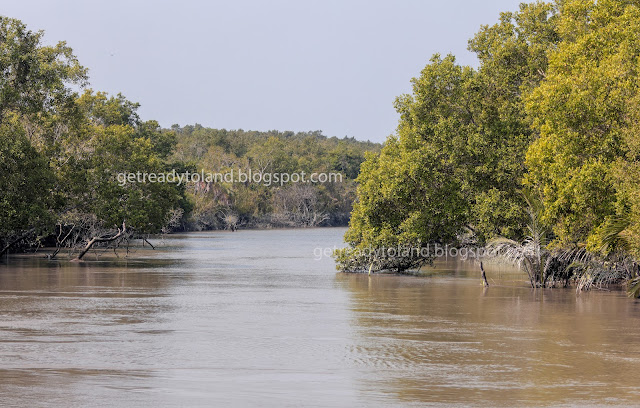 |
| A canal in Sundarbans |
Sundarbans National Park
Sundarbans National Park is a large coastal mangrove forest, shared by India and Bangladesh. The area is home to the Royal Bengal tiger, plus other endangered species such as the estuarine crocodile and Ganges River dolphin. Boats from Khulna city travel south along the river to a quiet mangrove beach at Kotka. Here, a watchtower offers views of the forest and its birds and animals.
 |
| Mangrove Tree Roots |
Sundarban
The Sundarbans is a mesmerizing and ecologically rich region located in the delta region of the Bay of Bengal, straddling the border between India and Bangladesh. Renowned for its dense mangrove forests and diverse wildlife, the Sundarbans is a UNESCO World Heritage Site and one of the largest tidal halophytic mangrove forests in the world.
Stretching over approximately 10,000 square kilometers, the Sundarbans is a unique ecosystem formed by the confluence of numerous rivers, including the Ganges, Brahmaputra, and Meghna. The region is characterized by its intricate network of waterways, mudflats, and small islands, making it a haven for various species of flora and fauna.
The mangrove forests of the Sundarbans are dominated by the Sundari tree (Heritiera fomes), from which the region derives its name. These resilient trees have adapted to the harsh conditions of the tidal environment, with their stilt roots providing stability in the muddy soil and their foliage offering crucial habitat for diverse wildlife.
One of the most iconic inhabitants of the Sundarbans is the Bengal tiger (Panthera tigris tigris). This majestic apex predator is well adapted to the mangrove habitat and is known for its ability to swim proficiently in the brackish waters of the region. The Sundarbans is home to one of the largest populations of Bengal tigers in the world, although their numbers are threatened by habitat loss, human-wildlife conflict, and poaching.
In addition to tigers, the Sundarbans supports a wealth of biodiversity, including numerous species of birds, reptiles, and mammals. The region is a vital habitat for endangered species such as the estuarine crocodile (Crocodylus porosus), the Indian python (Python molurus), and the Irrawaddy dolphin (Orcaella brevirostris).
The Sundarbans also plays a crucial role in supporting the livelihoods of millions of people who depend on its natural resources for sustenance and economic activities such as fishing, honey collection, and woodcutting. However, the region faces numerous challenges, including climate change, rising sea levels, deforestation, and pollution, which threaten its delicate balance and the communities that rely on it.
Efforts to conserve the Sundarbans and its biodiversity are underway, with governments, NGOs, and local communities working together to implement sustainable management practices, mitigate human-wildlife conflict, and raise awareness about the importance of preserving this unique ecosystem for future generations. Through these collective efforts, it is hoped that the Sundarbans will continue to thrive as a symbol of natural beauty and ecological resilience for years to come.